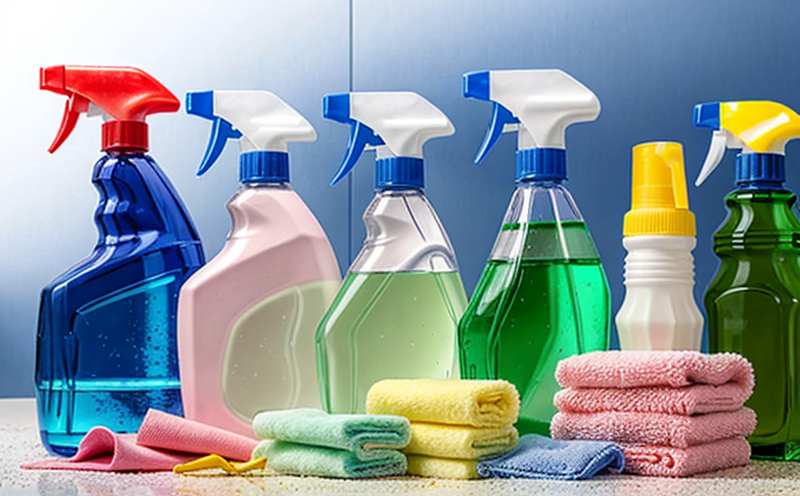Residue Testing of Detergents on Fabrics
The residue testing of detergents on fabrics is a critical process that ensures consumer safety and product quality. This service evaluates the amount of detergent left behind after washing, which can affect fabric integrity, user health, and environmental impact. Understanding the residual levels helps manufacturers optimize detergent formulations, ensuring they are effective yet safe for repeated use.
The residue testing involves several steps to ensure accurate results. The first step is selecting a representative sample of fabrics that will be exposed to different detergents under controlled washing conditions. This allows for a comprehensive evaluation of how the detergent performs over multiple wash cycles. The selection process considers fabric type, weave density, and color fastness, as these factors can influence the retention of detergent residues.
Once the samples are prepared, they undergo washing in a laboratory washing machine set to replicate real-world conditions. This includes using specific water hardness levels, temperature ranges, and detergent concentrations. After washing, the fabrics are dried under controlled conditions to prevent any external contamination that could skew results.
The next step involves extracting residues from the fabric samples. Various methods may be used depending on the nature of the residue being tested. For instance, solvents like ethanol or water can be employed for easier extraction processes. The extracted residues are then analyzed using quantitative analytical techniques such as spectroscopy or chromatography to determine their concentration accurately.
Accurate reporting is crucial in this process. Results should include detailed information about the type of detergent used, washing parameters, and the level of residue found on each fabric sample after every wash cycle. This data helps manufacturers understand which aspects of their product need improvement, whether it's reducing foam production or minimizing chemical residues.
Residue testing also plays a vital role in ensuring compliance with international standards such as ISO 17892 and ASTM D6424. These guidelines provide benchmarks for acceptable levels of detergent residues on fabrics based on factors like fabric type, usage frequency, and environmental impact considerations.
Scope and Methodology
| Aspect | Description |
|---|---|
| Sample Selection | Selecting fabrics with varying characteristics such as fabric type, weave density, and color fastness. |
| Washing Conditions | Replicating real-world washing conditions using specific water hardness levels, temperature ranges, and detergent concentrations. |
| Residue Extraction | Using appropriate solvents like ethanol or water for easier extraction of residues from fabrics. |
| Analytical Techniques | Quantitative analysis using spectroscopy or chromatography to determine residue concentration accurately. |
| Data Reporting | Including detailed information about detergent type, washing parameters, and post-wash residue levels in the report. |
Benefits
- Ensures consumer safety by minimizing harmful residues on fabrics.
- Improves product quality through optimized detergent formulations.
- Aids in meeting international standards like ISO 17892 and ASTM D6424 for residue levels.
- Supports compliance with environmental regulations regarding chemical usage and discharge.
- Enhances brand reputation by providing transparent, reliable testing results to consumers.
- Promotes sustainable practices by reducing unnecessary detergent use and minimizing waste.
Eurolab Advantages
At Eurolab, our expertise in residue testing of detergents on fabrics is unparalleled. Our state-of-the-art facilities equipped with advanced analytical instruments ensure precise measurements and reliable results every time. We employ experienced scientists who stay updated with the latest research and methodologies to provide accurate evaluations.
We offer flexible service packages tailored to meet your specific needs whether you require one-off tests or ongoing support for new product developments. Our commitment to quality means that all our services comply strictly with relevant international standards, ensuring consistency and accuracy in every test conducted.





